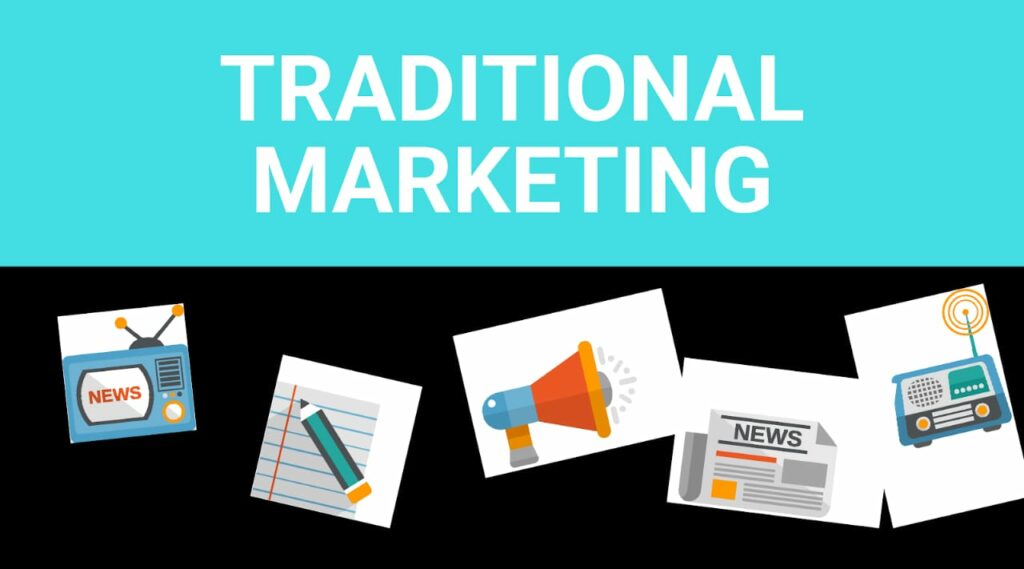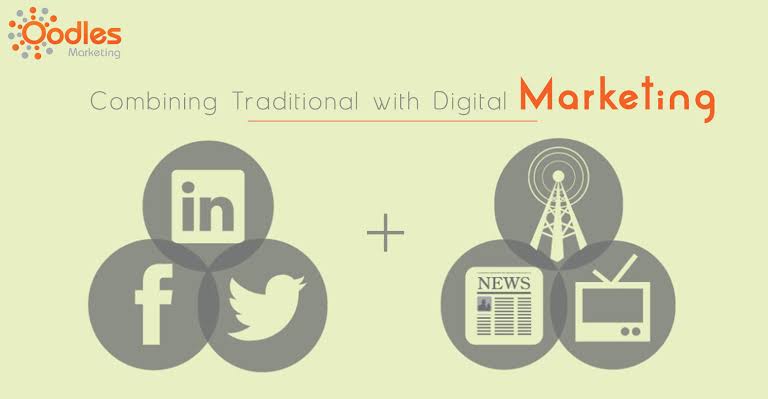
Offline Advertising in the Shadow of the Pandemic
September 11, 2023
Why You Should Go for Cab Advertising in 2024
September 18, 2023As an ever-changing field, marketing must adapt to consumers’ needs and desires to survive. Increasing competition makes it difficult to grab the attention of target audiences more than at any other time. Progressing with technology, new marketing strategies, including search engine marketing, SEM, PPC advertisements, and Google Ads, have dramatically shifted trends to a digital space. But despite this digitalization, traditional advertisements are still necessary, including TV advertisements, print media in newspapers, billboard advertisements, and radio spots.
What Is Traditional Advertising?
Traditional Advertising
Traditional or old advertising is the traditional marketing tool that uses print media, television, radio, billboards, and event marketing to reach consumers. These methods transmit direct messages about products and services to the target market, thereby being extremely effective for a mass market. This technique can be called ATL, Above The Line marketing.
Salient Features of Traditional Advertising
- Direct Message: Traditional advertising delivers clear, direct messages to consumers, thus allowing direct receptivity.
- Physical Presence: Ads in newspapers, magazines, or hoardings provide an experience that digital ads cannot offer.
- Establish Trust: Most customers feel that conventional ways of advertising are reliable because they have such a rich history associated with them.
- Reachability: Users who need to learn the basic details of technology or proper internet connectivity would very quickly understand the feel and know-how of traditional ads.
- Brand Consistency: Repeated exposure through traditional media will establish familiarity and trust for the brand.
Old advertising is a good base for brand promotion and lead generation by influencing markets through known channels.
Forms of Traditional Advertising

While digital marketing may rise, traditional marketing is still a mighty tool for companies. Following are some conventional marketing tactics that are delivering a good ROI for any business:
Print Ads
Print Advertising is still a signature product when it comes to old marketing. In this form, the advertising uses magazines, newspapers, pamphlets, and direct mail to address a large cross-section of people.
- Targeted Reach: Print ads can be placed in specific publications that target specific audiences.
- Tactile Material: With print ads, consumers can interact with the material at their own pace.
- High Interactions: Readers tend to spend more time with print media than clicking a button for online media, thus making the ad’s message stay longer in their minds.
- Credibility: Print ads are considered highly credible as opposed to online ones and thus can enhance trust in a brand.
- Long Term: Print advertisements are read more times so that the message can be read multiple times.
Print media can also facilitate the delivery of a message and build relationships with customers over a long time.
Billboards
Billboards are outdoor advertising hoardings that are put up on highways, traffic signals, and even main roads.
- Gross Exposures: The billboard size is large, and its design is eye-catching, so people tend to observe it and pay attention to what’s written on it.
- Geographic Targeting: The target audience can be reached by choosing specific locations.
- Brand Recall: The repetition of billboards ensures brand remembrance among the masses.
- Cost-Effective: Generally, billboards are less expensive in terms of impressions than digital media.
- Creative Expression: Billboards provide an opportunity for creative expression that attracts and engages the audience.
Through billboards, brands reach massive audiences, making it one of the essential components of their traditional media plan.
Television Advertisements
Television is still an effective way to advertise. The television commercial reaches almost every house, thus reaching homogeneous and heterogeneous populations very effectively.
- Widely Accessible: TV commercials can reach millions of viewers at one time. Such attributes make it an excellent mass marketing tool.
- Emotional Storytelling: The medium of television allows brands to connect with the target audiences through interesting emotional stories emotionally.
- Multisensory Interaction: The combination of video and audio naturally increases engagement and better message recall than audio or audio-visual.
- Live Event Tie-In: Commercials can be tied to important events, like sports finals.
- Established Brand Identity: Systematic advert placement on television is the best way to develop a brand’s existence and increase recognition.
Television advertising is still alive and kicking in 2024. For this aspect, television adverts will help a brand deeply relate its story to its audience.
Why Traditional Advertising Continues to Be Relevant in 2024
Digital marketing rapidly transforms the industry due to its numerous features and widespread access. There are many reasons why traditional advertising is still in use today:
Here are 5 reasons why traditional Advertising is still used over Digital Advertising
Prefer Traditional Ways

Many consumers still have an affinity for old-style advertising due to perceived authenticity and reliability.
- Brand Association: Repeated exposure to print advertisements and TV commercials develops brand association.
- Ease of Understanding: Consumers think old-style advertising is more understandable than the chaos of difficult digital ads.
- Fewer Distractions: It reduces the distraction found in a digital environment.
- Building Community: Local paper advertising and regional billboards develop community connections.
- Nostalgia: Some consumers have nostalgia about media, which increases response.
This trend indicates the necessity of merging the conventional with the new marketing strategies.
The Rise in Cross-Functional Marketing

Combining digital and traditional marketing genres ensures better reach in the targeted sector.
- Cross-Promotion: It increases potential exposure through multiple channels by integrating both forms of media.
- Integrated Campaign: A single message that flows between one form and another is continuing for the audience.
- Increased Engagement: Different format designs for more significant engagement or participation on the part of the audience.
- More Inclusive Audience: A hybrid marketing approach tastes different among the generations.
- Knowledge-Based Innovation: Insights attained from each strategy will aid future marketing decisions.
Hybrid marketing allows a brand to reach audiences in various ways, creating more effective outcomes.

The Long Life of Traditional Advertising

Although the digital platform grows, traditional advertising has lived longer than expected.
- Traditional methods are secure because of their long-standing methods, thus ensuring reliability.
- Continuous Engagement: People consume more media products through traditional media, so a captive audience is always available.
- Easy: The ease of traditional advertising is a source of solace for the consumer who likes things that are not confusing.
- Broader Reach: Traditional advertisements can penetrate audiences who do not use digital.
- Longer Haul: Traditional media means that advertisements will be forgotten immediately when a consumer deletes the internet.
Traditional advertising is gold for brands looking to have meaningful engagements with consumers.
5 Reasons Why Traditional Advertising is Used More Than Digital Advertising

As we progress, let’s discuss the robust reasons why traditional advertising thrives in the digital age:
Dealing with Digital Overload
Individuals spend hours online and quickly get tired of too many digital ads.
- Ad Fatigue: Excessive exposure to digital ads elicits a response that is not engagement but disengagement with irritation.
- Greater Engagement: Traditional advertising offers greater engagement levels than many digital formats.
- Authenticity: Traditional advertising has a better chance of being found authentic by the consumer than digital options.
- Less Intrusiveness: Traditional advertisements are less intrusive, paving the way for more natural interaction.
- Cost-Effective: Most traditional advertising methods are inexpensive compared to the expenditure on digital fraud.
Cutting through the Noise of Digital: Traditional advertisements can cut through the noise in digital media and attract consumers’ attention effectively.
More Transparency and Trust
Generally, people believe the traditional marketing processes more than their digital version.
- Authentic Interactions: One-to-one engagements can attain credibility and transparency.
- Less Fraud: Traditional advertising is known to have lesser fraud means, so people trust more.
- Safe Source: The power and credibility of the brand can be assured through strong media sources.
- Physical Evidence: When the advertisements are visible to the public, it becomes tangible proof that the brand exists in the market.
- Proven Outcome: Advertisement through traditional means has a proven track record for creating an outcome where a return on investment is noticed.
This establishes trust; hence, brands are more inclined to opt for traditional advertising to develop customer relationships.
Cheap to Pocket
The majority of advertisement traditions happen to be cheap, hence accessible to every kind of business.
- Less Upfront Investment: Generally, most traditional marketing mediums require lower up-front investments than digital ones.
- Longer Run Time: Ads in print media or billboards exist longer; hence, there is a more significant ROI.
- Cheap Options: Many forms of traditional advertising can fit businesses with almost every budget.
- Less Competition: Traditional advertising may give extensive exposure for lesser prices in less saturated markets.
- Local Focus: Small business owners who want to advertise locally have more accessible options at affordable prices.
These financial benefits make traditional advertising relevant even in the present times.
Digital and Traditional Marketing
A balanced approach combines digital and traditional marketing, making the campaign all the more effective.
- All-Inclusive Strategies: The two can be amalgamated to create an all-encompassing brand marketing strategy.
- Channel Assortment: Channels can be coupled to multiply the distribution of marketing messages and amplify the campaigns.
- Behavioral Targeting: Traditional methods can also be targeted according to behavioral analytics.
- Broader Audience Reach: The ability to create cross-channel marketing strategies broadens the audience reach.
- Leveraging: Utilizing traditional advertisement’s reliability allows for better reception in digital contexts.
Hence, brands can optimize marketing efforts through integration and leverage cross-promotional marketing strategies.
Local Markets Matter
In the business field, personal connections will always be critical to the success of local companies. Traditional advertisements tend to have a more substantial local impact than digital ones.
- Community Engagement: Customers like to engage with local businesses; traditional advertising can create a personal touch.
- Local Preferences: Traditional methods address the needs and preferences of the local audience.
- Building Relationships: Old-style ads help establish deeper relationships with the local market.
- Immediate Availability: Local businesses can drive traffic through advertisement via the local audience.
- Sense of Belonging: People relate to brands they can see in their community and understand their relevance.
So, the engagement from the local audience will promote local businesses, keeping traditional advertising relevant.
Final Thoughts
As the business landscape evolves with emerging technologies and changing consumer behaviors, traditional advertising remains a relevant and effective marketing strategy. Integrating traditional and digital methods ensures broader reach and engagement, while the trusted nature of conventional advertising fosters credibility and brand loyalty.
- Traditional advertising connects with consumers on a personal level.
- The longevity and credibility of traditional ads help build trust.
- The local impact of traditional ads can drive business success.
- An integrated marketing approach can amplify brand visibility.
- Traditional advertising continues to offer cost-effective solutions.
In a world dominated by digital media, it’s essential to recognize the value and effectiveness of traditional advertising. It remains a critical tool in a marketer’s toolkit, ensuring brands connect with their audiences meaningfully.




